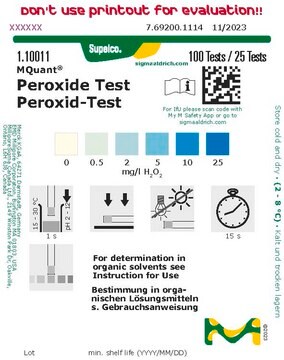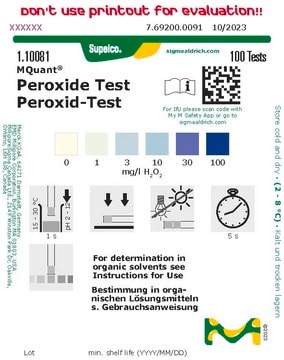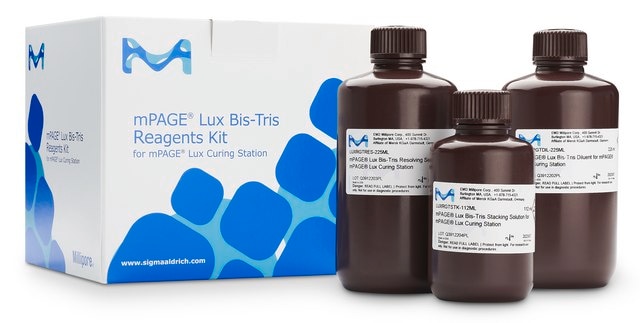PD1
PeroxiDetect™ Kit
Synonym(s):
Peroxidase assay kit
About This Item
Recommended Products
Quality Level
storage temp.
2-8°C
General description
Application
- in the quantification of hydroperoxides in synaptosomal preparation
- in measuring lipid peroxidation in melanoma cells
- to quantify peroxides in the cerebral cortex
- intestinal lumen sample
Components
Legal Information
Kit Components Only
- tert-Butyl hydroperoxide 1 mL
- Hydrogen peroxide 1 mL
Signal Word
Danger
Hazard Statements
Precautionary Statements
Hazard Classifications
Acute Tox. 2 Inhalation - Acute Tox. 3 Dermal - Acute Tox. 4 Oral - Aquatic Acute 1 - Aquatic Chronic 1 - Eye Dam. 1 - Met. Corr. 1 - Muta. 2 - Org. Perox. C - Skin Corr. 1A - Skin Sens. 1 - STOT SE 3
Target Organs
Respiratory system
Storage Class Code
5.2 - Organic peroxides and self-reacting hazardous materials
Flash Point(F)
Not applicable
Flash Point(C)
Not applicable
Choose from one of the most recent versions:
Certificates of Analysis (COA)
Don't see the Right Version?
If you require a particular version, you can look up a specific certificate by the Lot or Batch number.
Already Own This Product?
Find documentation for the products that you have recently purchased in the Document Library.
Our team of scientists has experience in all areas of research including Life Science, Material Science, Chemical Synthesis, Chromatography, Analytical and many others.
Contact Technical Service












